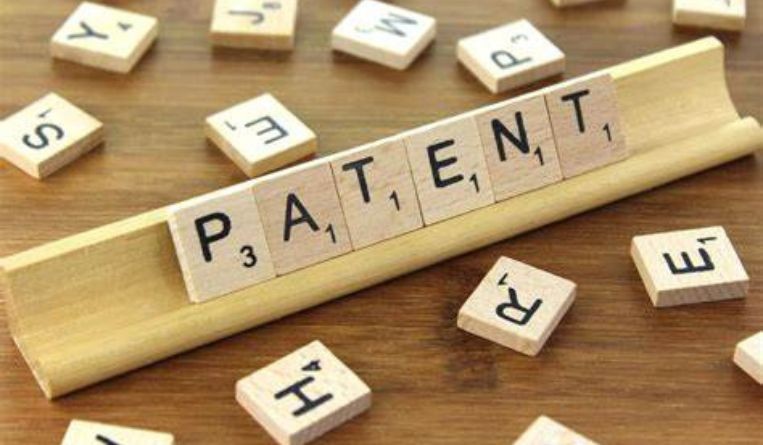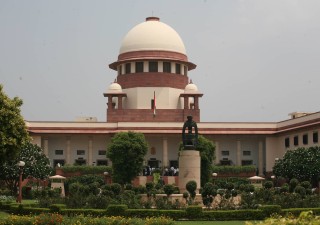Looking Beyond The Novelty Lines
31 August 2022

Looking beyond the novelty lines
Inventions already in the public domain are not patentable. Novelty or anticipation are determined with reference to the statement of the claim of the patent application and they are likely to be tested during the entire life span of 20 years of a patent. In the words of British barrister and judge Lord Justice Eric Leopold Otho Sachs: “To anticipate the patentee’s claim the prior publication must contain clear and unmistakable directions to do what the patentee claims to have invented.”
Novelty is a question of fact to determine whether the invention has been anticipated by a previous patent, publication, or by use. India supports the determination of absolute novelty and the anticipation by publication could have occurred in India or elsewhere. The rationale behind anticipation being “it would be wrong to prevent a man from doing something which is merely an obvious extension of what of what has been doing or what is known in the art before the priority date of the patent granted.”
Commercial success is no guarantee of novelty
Every successful commercial idea may have a potential market value, but every clever business idea may not qualify as an invention within the meaning of the patent law. Rejecting the Thermos patent, Justice Neville observed in Thermos v. Isola [1910] 27 RPC 388 that “[T]here is no doubt that the article which he put upon the market proved a very great success; and I think that the idea, if it was his idea, was a good one. But the question is whether, because the idea is commercially good, it, therefore, involves the exercise of the inventive faculty. It seems to me that though in many, and one may say in most cases it does, it does not in all.”
Concept of anticipation
Novelty is the hallmark of every new invention to cross the line of patent eligibility in India and elsewhere. Since Indian patent law largely takes its provisions on anticipation from the British patent, law, Indian courts are naturally inclined to apply the principles on anticipation laid down by UK courts. The law and practice relating determination of anticipation are guided by the contours of precedents all over patent jurisdictions. However, the law regarding anticipation gets its credence from the statement made by Lord Westbury in Hills v. Evans (1862) LJ Ch 457 that “a person of ordinary knowledge of the subject would at once perceive and understand and be able practically to apply the discovery without the necessity of making further experiments.” The first principle of anticipation was established by Westbury in Hills v Evans [1862] 31 wherein it is stated that whatever is essential to the new invention must “be read out of the prior publication. If further information and further discovery are required and difficulties have to be overcome before the desired result is finally arrived at and embodied in a form which would serve the uses of mankind, it cannot be said that the prior publication is an anticipation of the new invention.”
In Hill v. Evans, Westbury considered what would amount to disclosure of an invention and said: “I apprehend the principle is correctly thus expressed: the antecedent statement must be such that a person of ordinary knowledge of the subject would at once perceive, understand and be able practically to apply the discovery without the necessity of making further experiments and gaining further information before the invention can be made useful. If something remains to be ascertained which is necessary for the useful application of the discovery, that affords sufficient room for another valid patent.’
Again, in General Tires & Rubber Co. v. Firestone Tyre & Rubber Co. Ltd [1972] RPC 486 lines 9-10 Sachs held: “To determine whether a patentee's claim has been anticipated by an earlier publication it is necessary to compare the earlier publication with the patentee’s claim. The earlier publication must, for this purpose, be interpreted as at the date of its publication, having regard to the relevant surrounding circumstances which then existed, and without regard to subsequent events. The patentee's claim must similarly be construed as at its own date of publication having regard to the relevant surrounding circumstances then existing. If the earlier publication, so construed, discloses the same device as the device which the patentee by his claim, so construed, asserts that he has invented, the patentee’s claim has been anticipated, but not otherwise.”
Sachs further elaborated his observation on anticipation through rhetoric: “A signpost, however clear, upon the road to the patentee’s invention will not suffice. The prior inventor must be clearly shown to have planted his flag at the precise destination before the patentee.”
Law of anticipation: Position in India
In the Indian context, the Bombay High Court in Farbwerke Hoechst AG v. Unichem Laboratories [AIR 1958 BOM 255 p 256] followed a test of novelty as formulated by Halsbury:” “15. That brings me to the next ground of alleged invalidity of the plaintiffs’ patent, viz. want of novelty. The test of novelty as formulated by Halsbury, (3rd edn., Vol. 29 p. 27 para 58) is in the following terms: To anticipate a patent, a prior publication or activity must contain the whole of the invention impugned; i.e., all the features by which the particular claim attacked is limited. In other words, the anticipation must be such as to describe, or be an infringement of the claim attacked.”
In Farbwerke Hoechst & B. Corporation v. Unichem Laboratories, the Bombay High Court observed that “had the document been placed in the hands of a competent craftsman (or engineer as distinguished from a mere artisan), endowed with the common general knowledge at the ‘priority date’, who was faced with the problem solved by the patentee but without knowledge of the patented invention, would he have said, ‘this gives me what I want?’”
In OA/8/2009/PT/CH [250/2012], the Intellectual Property Appellate Board held that “to defeat novelty, the appellant should show that an earlier document, disclosed all that the patentee is seeking to patent. And that each limitation of the claimed invention is found in a single prior art reference. The appellant has not done this. So the attack on novelty is rejected.”
In the matter of pregnant opposition in Graf & CIE AG and Maschinenfabrik Rieter Ag v. Nitto Shoji Limited (422/Cal/2000), the Controller held: “A prior art drawing may be taken into consideration as a prior art disclosure if it discloses the essential features of the impugned claim in a sufficiently and clearly understandable manner to a skilled person and also if the drawing is such that it provides an enabling disclosure either explicitly or implicitly.”
Novelty: New invention
As far as the definition of invention is concerned, Section 2(1)(j) of the Indian patent act looks at a triple test: novelty, inventive step and industrial application. Again, Section 2(1)(l) defines a “new invention” as “any invention or technology which has not been anticipated by publication in any document or used in the country or elsewhere in the world before the date of the filing of the application with complete specification, i.e., the subject matter has not fallen in the public domain or formed part of the state of art.”
The concept of ‘state of art’ was introduced in the patent act for the first time without defining what information constitutes the state of art. The Patent Act, 1970 imports precedents on anticipation from UK Patent Act, 1949 as we have seen from the case law referred to above. This provision was codified only in 2005 and it finds its application under the procedure of examination from January 2005. This provision was added to give legal basis to precedence in Indian Courts and UK Courts.
Mosaic of publications
If a prior publication is a death knell for patent grant or invalidation, joining many documents to reach anticipation is barred. The individual document must stand on its own merits. In India, the examiner is guided by following from the Manual of Office Procedure and Practice: “In order to demonstrate lack of novelty, the anticipatory disclosure must be entirely contained within a single document either explicitly or implicitly. If more than one document is cited, each must stand on its own, or the documents so cited are linked in such a manner so that they form a continuous document. The cumulative effect of the disclosures cannot be taken into consideration nor can the lack of novelty be established by forming a mosaic of elements taken from several documents.”
Conclusion
Novelty is the primary requirement to obtain a patent grant under the patent law of all jurisdictions. Interestingly, the grounds for opposition/revocation of a patent grant on the ground of anticipation are almost the same under Section 25 and Section 64. A patent examiner is more likely to refuse a patent to inventions that were disclosed prior to the time of an application on the ground of lack of novelty or anticipation. The stress of the attack upon the patent, on the ground of lack of novelty, can be reduced if the applicant conducts the freedom to operate search or prior art search. Looking for the prior art before taking a metal leap to cross the novelty line is an essential element in the business of inventing.
Professional help in the determination of the state of the art would be useful to obtain a strong and sustainable patent grant in India or elsewhere.








